
Cultural diversity is the quality of diverse or different cultures, as opposed to monoculture. It has a variety of meanings in different contexts, sometimes applying to cultural artifacts like music recordings or art works in museums, and sometimes applying to the variety of human cultures or traditions in a specific region, or in the world as a whole. It can also refer to the inclusion of different cultural perspectives in an organization or society.
The Proclamation of Masterpieces of the Oral and Intangible Heritage of Humanity was made by the Director-General of UNESCO starting in 2001 to raise awareness of intangible cultural heritage and encourage local communities to protect them and the local people who sustain these forms of cultural expressions. Several manifestations of intangible heritage around the world were awarded the title of Masterpieces to recognize the value of the non-material component of culture, as well as entail the commitment of states to promote and safeguard the Masterpieces. Further proclamations occurred biennially. In 2008, the 90 previously proclaimed Masterpieces were incorporated into the new Representative List of the Intangible Cultural Heritage of Humanity as its first entries.

Cultural heritage is the heritage of tangible and intangible heritage assets of a group or society that is inherited from past generations. Not all heritages of past generations are "heritage"; rather, heritage is a product of selection by society.
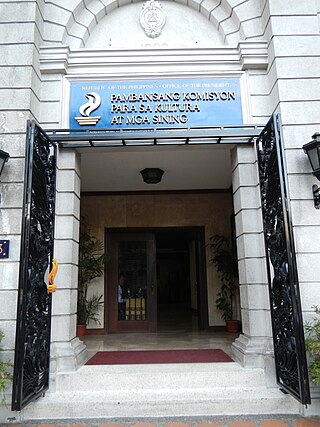
The National Commission for Culture and the Arts of the Philippines is the official government agency for culture in the Philippines. It is the overall policy making body, coordinating, and grants giving agency for the preservation, development and promotion of Philippine arts and culture; an executing agency for the policies it formulates; and task to administering the National Endowment Fund for Culture and the Arts (NEFCA) – fund exclusively for the implementation of culture and arts programs and projects.
An intangible cultural heritage (ICH) is a practice, representation, expression, knowledge, or skill considered by UNESCO to be part of a place's cultural heritage. Buildings, historic places, monuments, and artifacts are cultural property. Intangible heritage consists of nonphysical intellectual wealth, such as folklore, customs, beliefs, traditions, knowledge, and language. Intangible cultural heritage is considered by member states of UNESCO in relation to the tangible World Heritage focusing on intangible aspects of culture. In 2001, UNESCO made a survey among States and NGOs to try to agree on a definition, and the Convention for the Safeguarding of the Intangible Cultural Heritage was drafted in 2003 for its protection and promotion.

The Cultural Heritage Administration or CHA, formerly the Cultural Properties Administration, is the agency of the South Korean government charged with preserving and promoting Korean cultural heritage. It is headquartered in the city of Daejeon at the Daejeon Government Complex. Previously part of the Ministry of Culture and Tourism, it was elevated to a sub-ministerial agency in 1999.

The culture of Singapore has changed greatly over the millennia. Its contemporary modern culture consists of a combination of Asian and European cultures, mainly by Malay, South Asian, East Asian and Eurasian influences. Singapore has been dubbed as a country where "East meets West", "Gateway to Asia" and a "Garden city".

Richard Kurin, an American cultural anthropologist, museum official and author, is the Acting Provost and Under Secretary for Museums and Research at the Smithsonian Institution. He is a key member of the senior team managing the world's largest museum and research complex with 6,500 employees and a $1.4 billion annual budget, caring for more than 139 million specimens, artifacts and artworks, working in 145 countries around the globe, hosting some 30 million visitors a year, and reaching hundreds of millions online and through the Smithsonian's educational programs and media outreach. Kurin is particularly responsible for all of the national museums, scholarly and scientific research centers, and programs spanning science, history, art and culture.
Darpana Academy of Performing Arts is a school for performing arts in Ahmedabad, Gujarat, established by Mrinalini Sarabhai and Vikram Sarabhai in 1949, it has been directed by their daughter Mallika Sarabhai for the last three decades. The school organises a three-day Interart, the "Vikram Sarabhai International Arts Festival" at Ahmedabad, every year. It celebrated its golden jubilee on 28 December 1998, with the announcement of the annual "Mrinalini Sarabhai Award for Classical Excellence", in the field of classical dance.
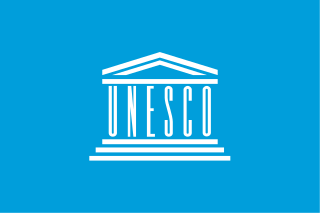
The United Nations Educational, Scientific and Cultural Organization (UNESCO) is a specialized agency of the United Nations (UN) aimed at promoting world peace and security through international cooperation in education, arts, sciences and culture. It has 194 member states and 12 associate members, as well as partners in the non-governmental, intergovernmental and private sector. Headquartered in Paris, France, UNESCO has 53 regional field offices and 199 national commissions that facilitate its global mandate.

The Turkish Cultural Foundation promotes and preserves Turkish culture and heritage worldwide, and places special emphasis on education for disadvantaged students in Turkey and abroad. Created in 2000, the Foundation seeks to help build cultural bridges between Turkey and other countries in order to support a better understanding and appreciation of Turkish cultural heritage. To do this, the Foundation coordinates a series of people-to-people cultural exchanges, educational programs, and websites promoting Turkish music, art, and cuisine. As a US tax-exempt public charitable organization, the Foundation is supported entirely by private donations and has offices in Boston, Istanbul, Sonoma and Washington, DC.
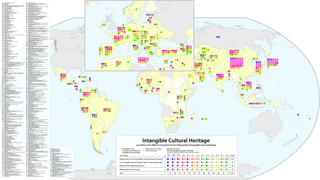
UNESCO established its Lists of Intangible Cultural Heritage with the aim of ensuring better protection of important intangible cultural heritages worldwide and the awareness of their significance. This list is published by the Intergovernmental Committee for the Safeguarding of Intangible Cultural Heritage, the members of which are elected by State Parties meeting in a General Assembly. Through a compendium of the different oral and intangible treasures of humankind worldwide, the programme aims to draw attention to the importance of safeguarding intangible heritage, which UNESCO has identified as an essential component and as a repository of cultural diversity and of creative expression.
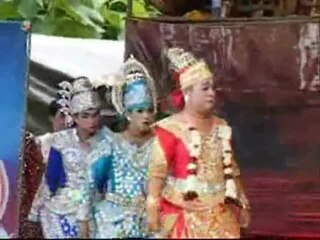
Jikey or Yikey is a form of traditional religious dance originated from India and commonly practiced by communities in several Southeast Asian countries such as Cambodia, Malaysia, Thailand, and Vietnam. Specifically, there are two major types of Jikey in Thailand, the one in central region tend to have more Buddhist characteristic adopted its original Indian form, meanwhile in the southern region it bear more Islamic characteristic as it is heavily influenced by the Persian and Arabs-derived culture which characterized by the usage of Middle Eastern musical instruments such as the tambourine, etc.

The Convention for the Safeguarding of the Intangible Cultural Heritage is a UNESCO treaty adopted by the UNESCO General Conference on 17 October 2003.

Angika is an Eastern Indo-Aryan language spoken in some parts of the Indian states of Bihar and Jharkhand, as well as in parts of Nepal.
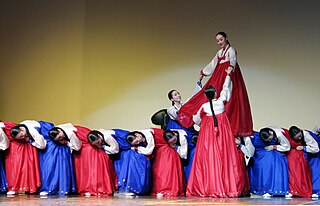
The heritage preservation system of South Korea is a multi-level program aiming to preserve and cultivate Korean cultural heritage. The program is administered by the Cultural Heritage Administration (CHA), and the legal framework is provided by the Cultural Heritage Protection Act of 1962, last updated in 2012. The program started in 1962 and has gradually been extended and upgraded since then.
Folk and traditional arts are rooted in and reflective of the cultural life of a community. They encompass the body of expressive culture associated with the fields of folklore and cultural heritage. Tangible folk art includes objects which historically are crafted and used within a traditional community. Intangible folk arts include such forms as music, dance and narrative structures. Each of these arts, both tangible and intangible, was originally developed to address a real need. Once this practical purpose has been lost or forgotten, there is no reason for further transmission unless the object or action has been imbued with meaning beyond its initial practicality. These vital and constantly reinvigorated artistic traditions are shaped by values and standards of excellence that are passed from generation to generation, most often within family and community, through demonstration, conversation, and practice.

Project Mausam is a cultural project by the Indian Ministry of Culture and Archaeological Survey of India (ASI) with the Indira Gandhi National Centre for the Arts and the National Museum in New Delhi which aims to connect countries on the Indian Ocean. The term "mausam" means "weather" or "season" and is derived from regional dialects including the Arabic word mawsim, which refers to the season when boats can safely sail.

Aishwarya Tipnis is an Indian architect, educator and heritage conservationist, whose eponymous practice Aishwarya Tipnis Architects focuses on heritage conservation of neglected monuments and significant buildings of India. In 2015, her work on the century-old Main Building of The Doon School received the Honourable Mention under the UNESCO Asia-Pacific Awards for Cultural Heritage Conservation. In 2016, the firm's restoration work on the walls and bastions of the 18th-century Mahidpur Fort, in Madhya Pradesh, was given the Award of Merit under the UNESCO Asia Pacific Heritage Awards. In 2018, she became the youngest architect to be appointed the Chevalier de l'Ordre des Arts et des Lettres by the French government for her preservation work of French heritage in India, particularly Chandernagore in West Bengal. Tipnis was part of the UNESCO Expert Team for preparing the Comprehensive Conservation Plan for the Darjeeling Himalayan Railway, a UNESCO World Heritage Site. She has been recognised as a Global Cultural Leader by the European Union in 2016.














